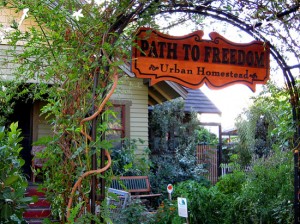Contributing Writer for Wake Up World
With food prices steadily rising over the last several years, by as much as five percent, families are scaling back and going without many staples just to put a meal on the table. Or worse, resorting to ‘bargains’ like fast food specials, subsidized SNAP junk food or just plain instant noodles to fill a hungry belly.
We have reached the point where self-sufficiency is not a luxury any longer, it’s a real necessity. In response, many are carving out a small homestead niche, even in the middle of lively cities. An encouraging example is found with a micro-farm in the heart of Southern California.
[pro_ad_display_adzone id=”110028″]
The downward spiral of dwindling food supplies
It isn’t much of a stretch to see our food dollars are shrinking. A combination of droughts, erratic weather patterns and astronomical fuel costs have all contributed to an inflated food bill. The use of GMO seeds isn’t helping the matter either with horrible crop yields. Couple this with a nose dive of world economies and we have a recipe for wide spread shortages of quality, nutritious food. Individuals are waking up to these realities and taking matters into their own hands — not only growing their own food, but removing themselves from the grid as much as possible, even within the bounds of a bustling city. A shining model of exceptional self-sufficiency, survival and ecological action is the Urban Homestead.
The path to freedom
The tale begins in the mid-1980s when Jules Dervaes sold his property in rural Florida to head west and purchase a ramshackle fixer-upper in a low income Southern California neighborhood. Over the course of several decades, the property was transformed into a self-sufficient garden of Eden, providing over 6,000 pounds of fresh produce annually using sustainable, eco-friendly practices. As an authentic farm, chickens, ducks, dwarf rabbits and pygmy goats roam the property. Bees are also kept as well as an aquaponic pond with tilapia fish. The homestead embraces the following practices:
Garden
– Growing 99 percent of produce
– Saving seeds
– Companion planting
– Intensive growing methods
– Polyculture/intercropping
– Composting
Food
– Handmade bread, cheese, butter and yogurt
– Canning and drying
– Sprouting, fermenting and brewing
– Buying organic, in bulk and locally
Water and Energy Conservation
– Grey water for landscape
– Clay pot irrigation
– Solar outdoor shower
– Growing food not grass — edible landscaping
– Bottom water bed irrigation
– 12 solar panels
– Rechargeable batteries
– Solar and cob ovens
The farm also offers an abundance of resources for other aspiring homegrown revolutionaries through their website, presentations, workshops, film screenings and eco-events. More information can be found here.
In order to avert massive food shortages and environmental disintegration, it’s our responsibility to take the initiative. Now is the time to create mini-havens of fresh food and sustainability. As observed by Dervaes, “Let’s face it. Our world is in deep, deep trouble and we are the ‘troublemakers.’ We have to make real, difficult changes yesterday. Despite the obvious benefits, we are not going to recycle, compost, or talk our way out of this. Our leaders, being politicians, are not leaders at all but are bound to be followers, who just won’t be there for us in a crisis. So, it’s up to me and you to make the choice of becoming responsible stewards of the earth.”
Article Sources:
http://www.naturalnews.com/039158_farmers_gmos_crop_yields
http://urbanhomestead.org/about
http://urbanhomestead.org/urban-homestead-10-elements
Previous Articles By Carolanne
- Failing Economies Take Note: Iceland’s Silent Revolution May Hold the Solution to Financial Woes
- Rid the Body of Dangerous Bt-Toxin Found in Genetically Modified Food with These Tips
- Sugar Consumption a ‘Public Health Crisis’ Aggravated by GM Sugar Beets
- Encourage Prosperity, Alleviate Famine and Heal the Environment with Hemp
- Halt Infectious Disease, Cancer and Much More With a $3 Remedy
- Political and Corporate Elite Shun GM Food on Their Own Plate
[pro_ad_display_adzone id=”110025″]
Please note this article was first published on Natural News.
[pro_ad_display_adzone id=”110027″]







